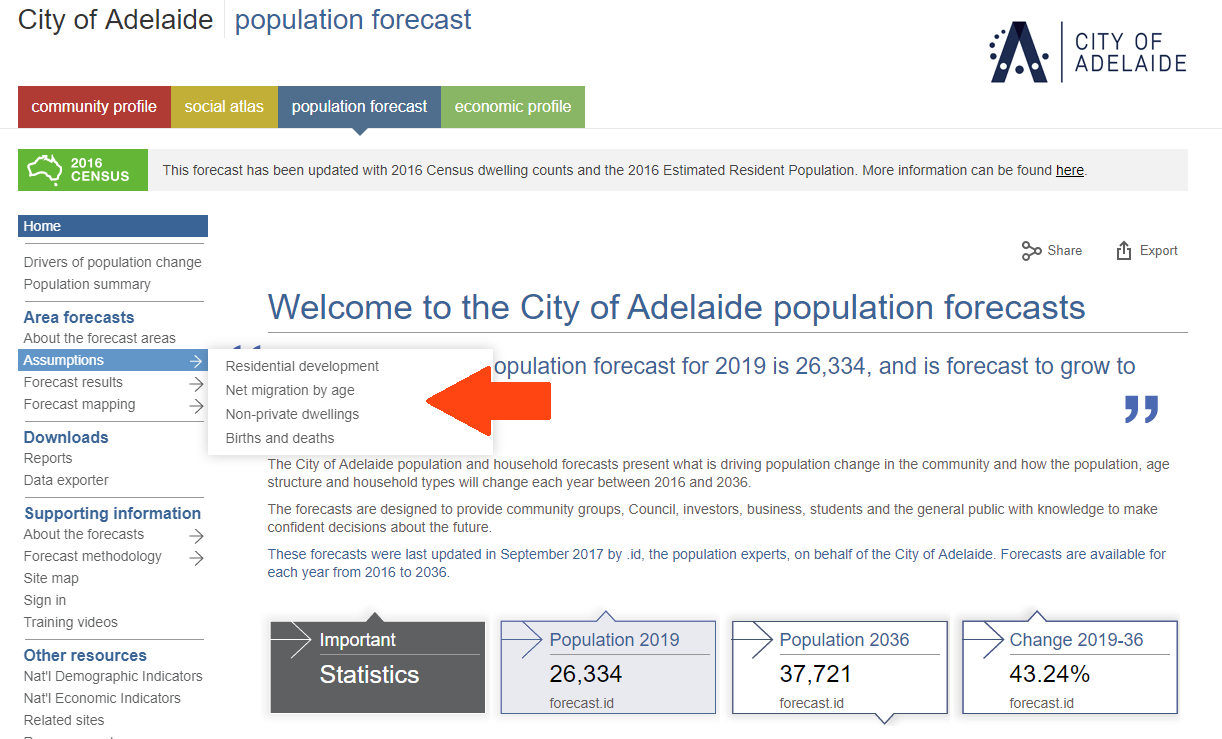Where State Government forecasts typically apportion population among major growth areas, .id's forecasts are developed in consultation with council to more closely consider the residential development expected in a local area.
This article references large sections of a blog we published on the same subject. You can read that blog here.
Transparent assumptions
"You only get out what you put in" - we know any forecasting model is only as good as the data that goes into it. That's why we are completely transparent about the inputs and assumptions in each of our population forecasts.
You can find all inputs for a forecast, including
- residential devleopment
- net migration by age
- non-private dwellings, and
- births and deaths
..all in the 'assumptions' tab in each population forecast.

Local planning consultation
We meet with council strategic planning teams when preparing our forecasts to gather detailed, granular insights into planned and likelihood of residential development in the area.
Role and function analysis
As demographic experts, we know suburbs don't follow linear patterns of growth and decline.
Instead, suburbs move through lifecycles, with elderly people who have lived and aged in a given place, eventually being replaced by younger families and new homebuyers. Understanding where a place is 'up to' in this suburb lifecycle, along with a demographer's understanding of the role and function of a given place, allows for a more nuanced population forecast.
Watch: people follow patterns
Further reading
Our eBook 'Which forecast should I use?' explores this subject in much greater detail.
